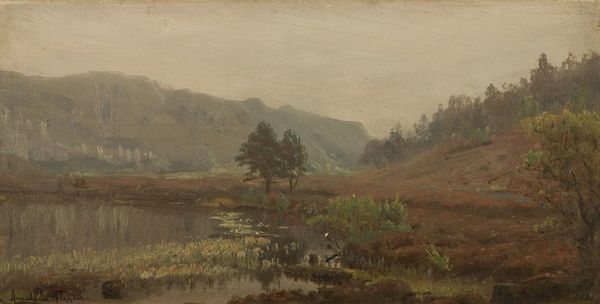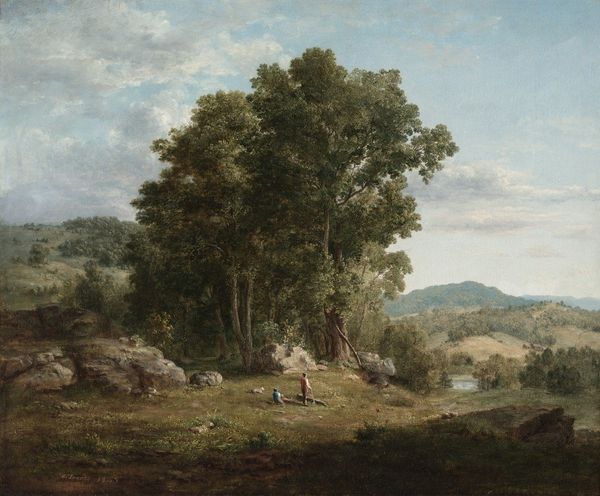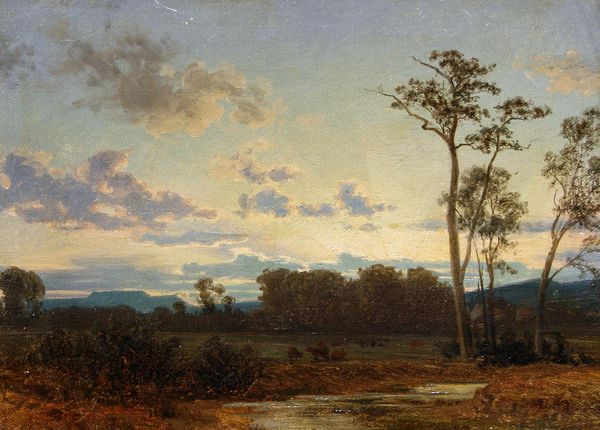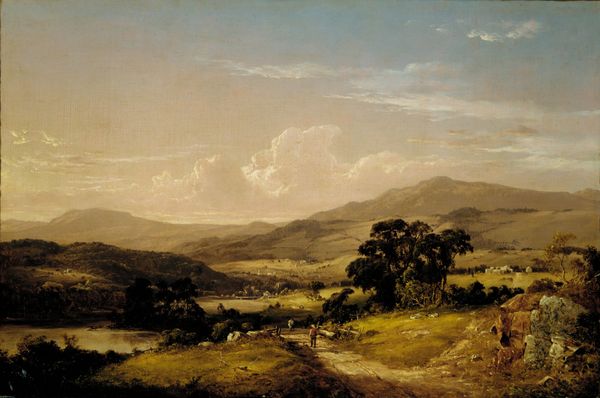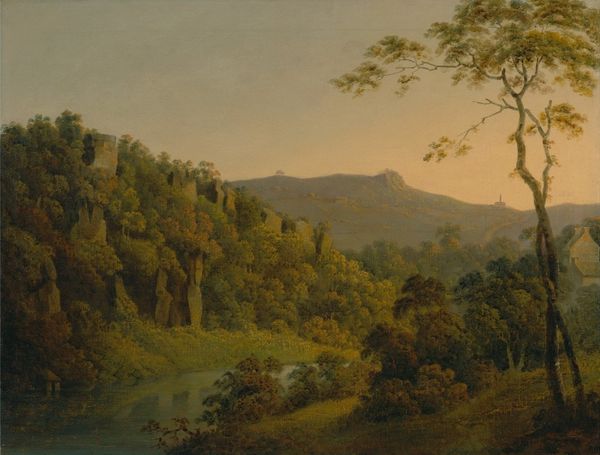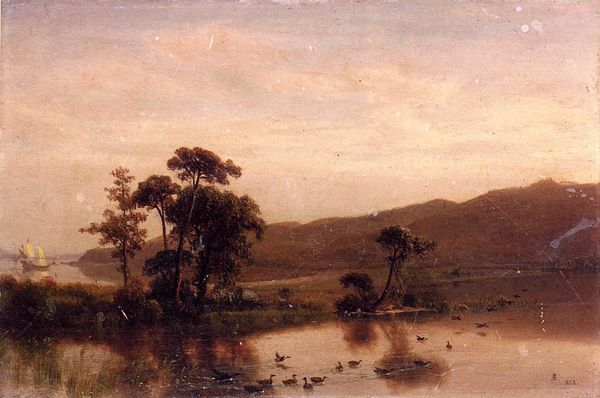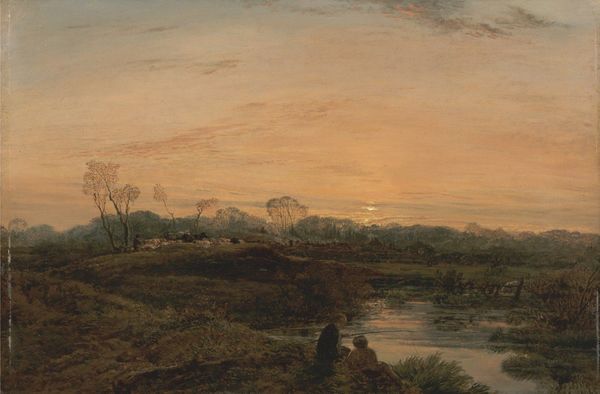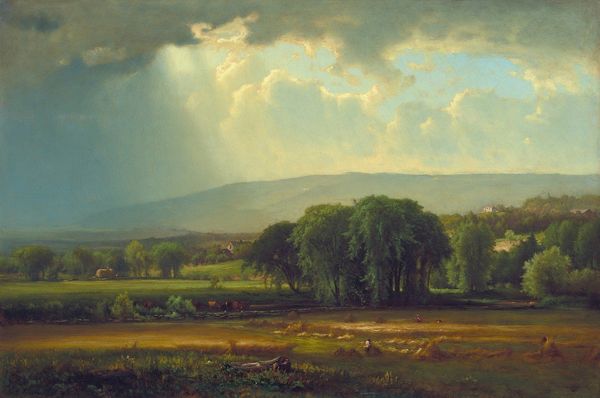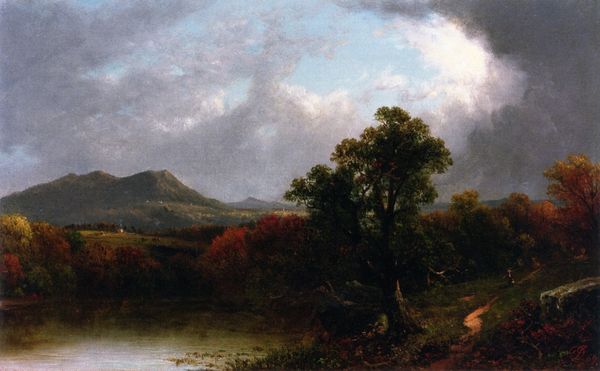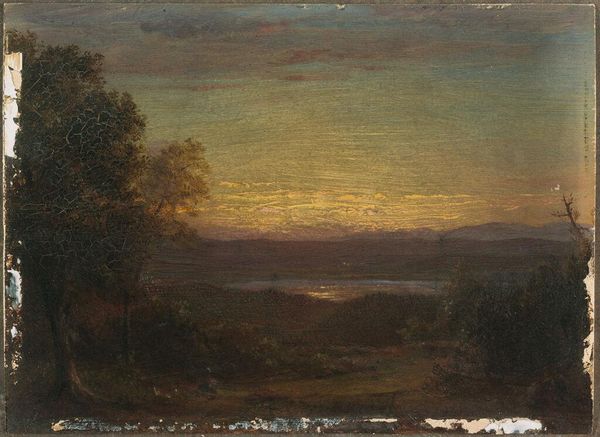
Moonlight on Mount Lafayette, New Hampshire 1873
0:00
0:00
Dimensions: 8 1/2 x 14 3/16 in. (21.6 x 36 cm)
Copyright: Public Domain
Curator: Standing before us is William Trost Richards’s "Moonlight on Mount Lafayette, New Hampshire," created in 1873. The work employs watercolor and charcoal drawing and presently resides here at the Metropolitan Museum of Art. Editor: Immediately, I'm struck by how quiet the scene feels. The silvery tones create a palpable sense of stillness, almost like holding your breath. The composition directs our eye to the focal point where moonlight pours in over a stark landscape. Curator: Considering Richards’s place within the Hudson River School, a key aspect of his work is his painstaking attention to the rendering of light. It shows luminism. We can almost see him at work *en plein air,* diligently capturing the subtleties of atmosphere and the particular way the moonlight interacts with surfaces. Think about the challenges in translating the nocturnal atmosphere using watercolor and charcoal – it becomes a testament to the skill of materials and process of rendering. Editor: And that dedication absolutely translates, doesn't it? The moon, although small, radiates power. The trees become almost totemic under that light, recalling ancient ideas about nature's dominion over man, that connection, you could even suggest some pantheistic feeling... There’s a somber beauty, but it isn’t devoid of hope. The moonlight gives the scene that glimmer. Curator: Exactly. It evokes a specific experience rooted in location but rendered through close attention to the effects of materials and conditions of production. That close study and depiction is a form of labor that shaped not just this piece but informs ideas of American artmaking at that moment. Editor: I am especially interested how Richards captured this moment with light in the midst of a dark backdrop. Symbolically, that light can represent several ideas, whether hope or enlightenment, adding layers of significance to an otherwise still setting. It reflects deeper notions within that era about mankind’s relation to an expansive country. Curator: Reflecting on this, the choice of such precise rendering, done en plein air – it adds to my sense of Richards asserting human control of a rugged terrain with particular implements and techniques. Editor: And for me, its evocative impact stems from its layered symbolic language, as moonlight continues to be linked to the spiritual and the ethereal in Western art, creating a dialogue between art, meaning, and the landscape of New Hampshire.
Comments
No comments
Be the first to comment and join the conversation on the ultimate creative platform.
